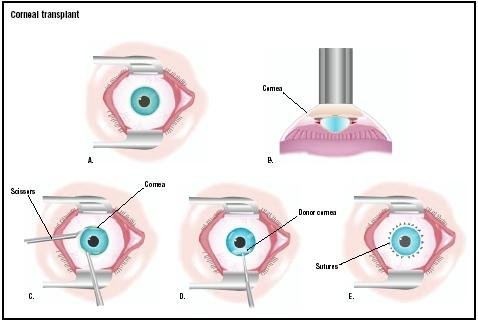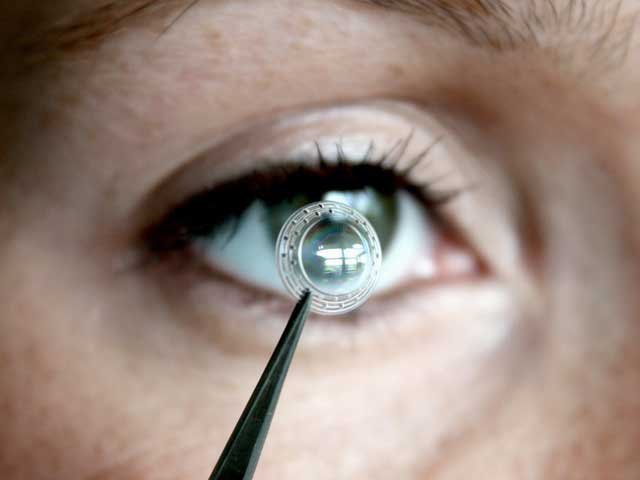
For anyone who is familiar with the annoyance of constantly putting on bi-focals, dealing with the uncomfortable hassle of contact-lenses, or always having to swap between near and far sighted glasses, there may be a solution just on the horizon. For years, LASIK (laser in-situ keratomileusis) surgery was the only option for those with vision impairment. While LASIK did an excellent job in repairing bad vision, LASIK is only available for certain recipients that meet the required guidelines. Even then, if the recipients are eligible, LASIK results have been known to decline over time, making glasses still required years down the road.
Thankfully, a new corneal implant procedure has been gaining momentum, and might very well be a long-term substitute to laser surgery. The procedure, which is still undergoing FDA approval, is currently being used in Europe, Asia, and South America, and may soon usurp LASIK as the long-standing vision solution. In order to give you a better insight into this new procedure, this article will discuss the 3 upcoming corneal implants currently gaining popularity, and how they could potentially correct your vision forever.
What is the corneal implant?

The corneal implant works by implanting a clear film inlay directly under the cornea. The doctor starts by using local anesthetic eye-drops to numb the area, and then uses a specially designed laser to cut a precise flap directly around the cornea. From there, the doctor gently inserts the implant directly under the cornea, seals the flap, and the patient is ready to go. The entire procedure takes around 10 minutes, is fully reversible, and virtually painless.
There are 3 corneal implants currently being used worldwide to treat conditions like presbyopia, hypermetropia, and myopia:
The karma inlay, which measures only 3.8 millimeters in diameter, is a doughnut-shaped implant, and is made of polyvinylidene fluoride and carbon.
The raindrop inlay, which is a tear-shaped permeable hydrogel implant, measures in between 1.5 and 2 millimeters in diameter, and is thinner than the karma inlay.
The Presbia Flexivue Microlens, which sits in-between the other 2 inlays at 3.0 millimeters, is also doughnut-shaped, and is made of hydroxyethyl methacrylate and methyl methacrylate.
While all 3 inlays hope to correct the same, common vision problems, each differ in their design, size, composition and functionality
What are the benefits of a corneal implant?

As you age, the cornea in your eye becomes increasingly more rigid. This loss of flexibility alters the way in which your eye perceives light, and adjusts the way your cornea can focus. This condition is known as presbyopia. Individuals over the age of 40 may begin to see such degradation, but everyone from children to young adults can suffer from similar vision loss. Myopia, astigmatisms, hypermetropia, and other such conditions are known causes for vision ailments.
Up until now, LASIK surgery and uncomfortable eye-wear have been the only solution. However, corneal implants may soon be the best solution. Corneal implants are fully-reversible, non-invasive, do not degrade, and take a fraction of the time that LASIK surgery does. Such benefits give the corneal implant a claim to potentially surpass LASIK for correcting presbyopia, and other related vision ailments.
The benefits for those still wearing glasses and contact lenses are just as apparent. Imagine never needing to reorder a case of contact lenses, or lugging around glasses whenever you need to read something with fine-print. When you consider the convenience of the corneal implant, as well as the safety benefits it has over LASIK, you can see why this procedure is gaining such popularity around the world.
According to the American Academy of Ophthalmology, there are roughly 150 million people in the United States alone that use corrective eye-wear. As of 2008, these figures equate to over $15 billion dollars spent annually on eye-wear. However, with cutting-edge procedures like the corneal implant, these figures could soon be drastically cut. Hopefully this article has given you some insight into what the corneal implant is, and how it could help correct common vision problems. If you're looking for more information on how the coneal implant could help you, or when it might be coming to your area, consult a local eye-care physician for more details.